| |
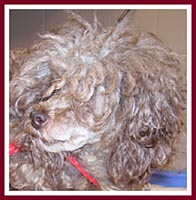 Several meetings of
the Dog Sellers Advisory Committee were held in May and June to discuss
Standards of Care, Certificates of Veterinary Inspection (CVI), and Age of
Transfer for puppies. After studying
Standards of Care Examples from
Other States, the DSAC went on to decide what they thought would work in
Wisconsin. Several meetings of
the Dog Sellers Advisory Committee were held in May and June to discuss
Standards of Care, Certificates of Veterinary Inspection (CVI), and Age of
Transfer for puppies. After studying
Standards of Care Examples from
Other States, the DSAC went on to decide what they thought would work in
Wisconsin.
Below, you
will find an outline of specifics that were discussed, and recommendations that
were made by the Committee.
|
| |
 Certificate of Veterinary
Inspection Certificate of Veterinary
Inspection  Age of
Transfer Age of
Transfer 
 Act 90, 173.41(10)
Standards of Care Act 90, 173.41(10)
Standards of Care  Food and
Water Food and
Water  Care for Animal Health and Vet. Care Care for Animal Health and Vet. Care 
 Indoor
Enclosures Indoor
Enclosures  Outdoor
Enclosures Outdoor
Enclosures  Runs and Exercise
Areas Runs and Exercise
Areas 
 Dog Grouping and
Separation Dog Grouping and
Separation  Behavior and
Socialization Behavior and
Socialization  Transportation Transportation 
|
| |
 Certificate of Veterinary Inspection Certificate of Veterinary Inspection
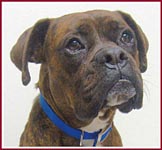 ACT 190: (8) HEALTH
REQUIREMENTS FOR SELLING DOGS. (a) No person who is required to be licensed
under sub. (2) may sell a dog without providing all of the following to the
purchaser: ACT 190: (8) HEALTH
REQUIREMENTS FOR SELLING DOGS. (a) No person who is required to be licensed
under sub. (2) may sell a dog without providing all of the following to the
purchaser:
1. A certificate of veterinary
inspection from a licensed veterinarian stating that the veterinarian has
examined the dog and found that it has no signs of infectious or contagious
diseases as of the date of the examination.
2. A copy of all vaccination
records for the dog showing the date the vaccine was administered and the name
of the person who administered the vaccine.
(b) No person who is required to
be licensed under sub. (2) may sell at auction a dog that is not spayed or
neutered without providing written proof that the dog has tested negative for
brucellosis using a test approved by the department that was conducted no more
than 30 days before the day of sale.
RECOMMENDATIONS:
Information Included on CVI:
- Name and address of seller
- Ability for a veterinarian to recertify a CVI without needing new form
- Place to note disease and other findings on the form itself.
- Examine the ability to re-consign a dog on the CVI. (see large animal CVI)
- The number, breed, sex (include spay/neutered/intact information) and age
of the animal(s) included in the shipment.
- Statement on general health of the animal(s) based on brief exam:
- “I certify as a veterinarian, accredited and certified by the State of
Wisconsin, that the described animal(s) have been inspected by me and that they
are not showing any sign of infectious, contagious and/or communicable disease
(except where noted). The vaccinations and results of tests are as indicated on
this certificate. No warranty is made or implied.
Information NOT Included on
CVI:
- IThe name and address of the person receiving the animal(s).
- A statement indicating if the dog was born in the person’s possession
or the name and address of the person from whom the dog was acquired.
Attachments:
- Record of the exam findings – could be a print out from the
veterinarian. (not about infectious contagious disease, but about something
like a heart murmur)
- List of vaccinations – include manufacturer and serial number.
Distribution:
- Three copies: one to buyer, one to seller, one for the veterinarian.
Duration:
A dog that is being resold prior to
the expiration of the original CVI, does not need to get a new CVI.
Health
certificates under CFR are good for 30 days from the date of the exam. The
group would like to see if we could have a CVI for purposes of act 90 be valid
for movement for 60 days post exam. (Discussion points: The statute does not
say the CVI that accompanies the animal needs to be a valid, non expired CVI.
The statute just says a CVI must accompany the animal.) Question for legal,
could this be done?
Answer from Cheryl Furstace
Daniels, Assistant Legal Counsel, Wisconsin Department of Agriculture, Trade
and Consumer Protection and Livestock Facility Siting Review Board :
The CVI is necessary when the dog is sold. A transfer
between facilities is not a sale because the dog or dogs moved will ultimately
be put up for adoption or sale. This makes sense because this legislation has
as its goals both dog health and safety and consumer protection in purchasing
or adopting a dog. The time that the CVI is necessary is when that purchase is
made.
2. When reading statutes, the use of a term like CVI
assumes that it is valid (legal) so implicitedly it must be current (not
expired.)
On-line CVI:
- Could be just a place to down load blank forms; benefits are that there
would be no need for a carbon copy, simply make multiple copies as carbons are
hard to read.
- If thinking to complete on- line there are concerns about security for
veterinarians
Required for what type of
movement:
“No person who is
required to be licensed under sub. (2) may sell a dog without providing all of
the following to the purchaser:”
Question is
what qualifies as a sale of a dog. Does a transfer of dogs b/t separately
licensed dog shelters, without any remuneration being made count as a sale, and
is a CVI required. – Question for legal
 Printer-friendly version
(pdf) Printer-friendly version
(pdf) 
|
Top
|
| |
 Age for Transfer of Puppy Age for Transfer of Puppy
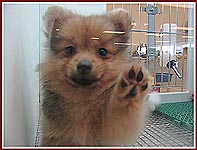 ACT 190: (9) AGE FOR TRANSFER OF PUPPY. A person
required to be licensed under sub. (2) may not transfer a dog to a buyer until
the dog is 7 weeks of age. ACT 190: (9) AGE FOR TRANSFER OF PUPPY. A person
required to be licensed under sub. (2) may not transfer a dog to a buyer until
the dog is 7 weeks of age.
RECOMMENDATIONS:
- Orphaned dogs under the age of 7 weeks may be legally transferred.
- Dogs moving with the dam maybe moved under the age of 7 weeks.
Temporary Dog Markets:
Make it clear in rule that licensed
facilities must still meet requirements for record keeping, standards of care,
movement, etc. when selling at a temporary dog market.
Are one day adoption events such as
at pet smart and mounds considered a temporary dog market?
Other issues:
Would be great if there was a
consumer hotline they could call with complaints and a place to email
complaints regarding facilities.
Sporting associations have some big
meetings coming up the end of June. Would really like to see the draft hearing
draft prior to that.
 Printer-friendly version
(pdf) Printer-friendly version
(pdf) 
|
| |
Top
|
| |
 Act 90 Standards of Care Act 90 Standards of Care
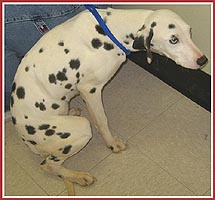 173.41(10)
Standards of Care. A person who is required to be licensed under sub. (2) shall
do all of the following with respect to each dog kept by the person: 173.41(10)
Standards of Care. A person who is required to be licensed under sub. (2) shall
do all of the following with respect to each dog kept by the person:
(a)
Provide sufficient food to maintain the dog in good health.
(b)
Provide sufficient water to maintain the dog in good health. If fresh water is
not available to the dog at all times, the person shall provide fresh water
daily and in sufficient quantity for the health of the dog.
(c) Ensure
that necessary and standard veterinary care is provided in a timely manner
(d) Ensure
that the dog is not kept in an enclosure unless all of the following apply:
- The enclosure is of an appropriate size, as determined by the
department, based on the size, age, and number of dogs kept in the enclosure
and the length of time the dog is kept in the enclosure.
- The enclosure is structurally sound and maintained in good repair to
protect the dog from injury.
- If wire flooring is used, it is coated, is of a sufficient gauge to
ensure that it will not cause injury to the dog, and is used only in the manner
specified by the department.
- The enclosure is maintained in a clean and sanitary condition.
(e) Ensure
that the dog is not kept in an enclosure for a period that the department
determines to be excessive, considering the size of the enclosure and any other
factors that the department considers relevant.
(f) Ensure
that the dog is kept outdoors only if all of the following apply:
- The dog is of a breed or type that is typically kept outdoors.
- The dog is acclimated to the outdoors.
- The person provides adequate shelter from the sun and inclement
weather.
(g) Ensure
that all facilities in which the person keeps the dog have adequate lighting
and ventilation and that a proper temperature is maintained for the dog,
considering its type or breed.
(h) Ensure
that the dog is provided adequate daily access to exercise, as determined by
the department.
(i) Ensure
that the dog is observed every day by the caretaker of the premises at which
the person operates or an individual under the direct supervision of the
caretaker to monitor the health and temperament of the dog and to provide care
to the dog as needed.
 Printer-friendly version
(pdf) Printer-friendly version
(pdf) 
|
| |
Top
|
| |
 Recommendations: Food and Water Recommendations: Food and Water
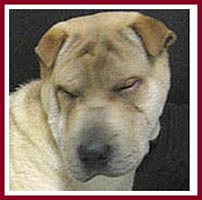 Feed at least
once a day, unless another schedule needed to provide adequate care for the
dog’s health. Feed at least
once a day, unless another schedule needed to provide adequate care for the
dog’s health.
Daily food quantity and nutrition based on dog’s
age, condition, size and weight.
Food must be, and kept stored, so as to be wholesome,
uncontaminated, and palatable.
Food storage containers must be kept clean and free of
contaminants.
Fresh water available at all times, or as often each day
and in sufficient quantity to keep the dog well-hydrated at all times.
Daily water must be fluid, potable and uncontaminated.
Daily water and food must be provided in a durable
container, except that food may be provided in disposable containers if
discarded after each use.
All food and water containers and utensils –
cleaned and sanitized using heat or chemical sanitizing solution as often as
needed to maintain sanitary conditions.
 Printer-friendly version
(pdf) Printer-friendly version
(pdf) 
|
| |
Top
|
| |
 Recommendations: Care for Animal Health and Veterinarian
Care Recommendations: Care for Animal Health and Veterinarian
Care
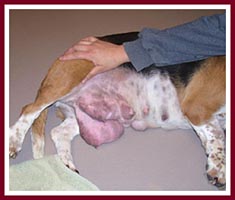 Handling of all dogs should be done
as carefully as possible in a manner that does not cause trauma, behavioral
stress, physical harm or unnecessary discomfort. Handling of all dogs should be done
as carefully as possible in a manner that does not cause trauma, behavioral
stress, physical harm or unnecessary discomfort.
Dogs given body, mobility and behavior checks by the
animal caretaker in charge, or by someone under the caretaker's direct
supervision, on a daily basis.
Keep a dog suspected of or having a communicable disease
physically separated from other susceptible animals.
Dogs shall be groomed to prevent abnormal matted hair
and overgrown nails, and so that they have freedom of movement and can perform
normal bodily functions.
A dog shall be examined by a veterinarian at least as
needed to ensure care of the dog’s health. During the examination, the
veterinarian shall use appropriate methods to prevent, control, diagnose and
treat diseases and injuries.
The licensee shall follow recommendations of the
attending veterinarian.
Sick, diseased or injured dogs shall be provided with
timely veterinary care or euthanized in a legal and humane manner.
The Department may issue a written notice requiring that
a dog be examined by a licensed doctor of veterinary medicine within a maximum
of 72 hours if: a) The Department employee personally observes the condition of
the dog in the course of an inspection of any place at which a dog is kept; and
b) The dog exhibits signs of illness, injury or neglect.
 Printer-friendly version
(pdf) Printer-friendly version
(pdf) 
|
| |
Top
|
| |
 Recommendations: Indoor Enclosure Recommendations: Indoor Enclosure
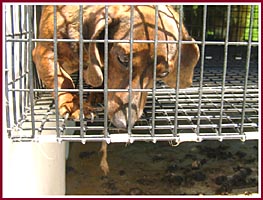 1. Primary
with separate run or exercise area: 1. Primary
with separate run or exercise area:
May be in resting and sleeping enclosure for up to 4
hours at a time, followed by 15 minutes or more time outside the enclosure to
maintain a dog’s healthy body condition.
May have the dog in the resting and sleeping enclosure
for 2 4-hour blocks, followed by 30 minutes or more time outside the enclosure.
Resting and sleeping enclosure size has enough room for
entire length of dog’s head and body, tall enough for dog to stand
normally and comfortably, and large enough for dog to turn around and lie down.
Total time outside of resting and sleeping enclosure for
each dog must be at least 60 minutes a day.
2. Primary
without separate run or exercise area:
Specified individual enclosure size based on dog’s
size for sleeping, resting and exercising
-
Specified group enclosure size also based on number and
temperament of dogs
3. Whelping
Dam must be able to lie down stretched out for all
puppies to nurse
Must also be large enough for puppy number and
temperament
Provide a place for dog to be away from puppies.
Whelping enclosure must have a solid floor and be of an
appropriate type for the breed.
4. Nursery
From weaning to age 4 months
Large enough to accommodate all puppies allowing them
to turn around, stand up, lie down, exercise normal postural movements, and to
encourage socialization and exercise.
5. Indoor Runs
or Exercise Areas
Floor may be metal wire strand if vinyl coated, the wire
is of a gauge adequate to prevent sagging under the weight of the animal or
injury to the animal's feet, and the mesh is small enough to prevent the
animal's feet from passing through.
No indoor dirt floor that has contact with a dog.
All surfaces must keep water off a dog and can be
cleaned and sanitized.
Constructed and maintained to prevent injury to dogs.
Constructed and maintained to enable the dogs to remain
dry and clean.
Stacking of primary enclosures may only be used if the
licensee can assure safe dog handling, with adequate ventilation and
temperature control, cleaning and sanitation. Any stacked primary enclosure
must be constructed and maintained to be stable when a dog is present in each
enclosure and prevent excreta, urine, dirt and debris from falling on any dog
in lower stack. Stacking must not impede facility inspection.
6. Facility
Lighting, Temperature and Ventilation
Well distributed natural or artificial light for proper
care and maintenance of dog, and to facilitate proper cleaning & sanitizing
and inspection. A diurnal lighting cycle shall be provided.
Heating and cooling consistent with a dog’s breed
and that breed’s ability to acclimate to temperature variation.
Protect any dog from cold, heat or humidity that may be
injurious to health.
Ventilate fresh or filtered air in indoor enclosures for
the health and comfort of dogs and to minimize odors, drafts, ammonia levels
and to prevent the condensation of moisture.
Provide the exchange of air from animal area to the
outside.
7. Facility
Cleaning and Sanitation
Cleaning of enclosure must be without the dog inside.
Dog should be returned only when enclosure is dry.
Daily removal of excreta, or more often as necessary for
the health and comfort of dog.
Clean and properly rinse, with detergent and a
sanitizer, as often as necessary to be free of accumulated dirt, debris and
disease hazards
Clean primary enclosures between occupations by
different dogs
Maintain clean dry bedding.
 Printer-friendly version
(pdf) Printer-friendly version
(pdf) 
|
| |
Top
|
| |
 Recommendations: Outdoor Enclosure Recommendations: Outdoor Enclosure
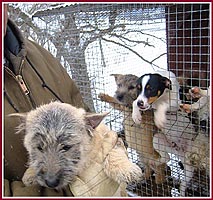 1. Primary
enclosure: 1. Primary
enclosure:
Dog is of a breed that can tolerate outdoor temperature
variation for the location.
Dog is of an age, health and physical condition that can
tolerate outdoor temperature variation for the location.
Dog is acclimated to the outdoor temperature variation
for the location.
Must provide a shaded area that can protect all dogs in
enclosure from direct sun rays without crowding
Must provide a dog shelter of a size for all dogs in the
enclosure to use the shelter and not be unduly crowded
- Must be constructed and maintained to prevent a dog from escaping.
2. Dog shelter:
The shelter must be made of a durable material and have
a flat solid floor.
Constructed and maintained to prevent injury.
Constructed and maintained so as to allow the dog to
retain enough body heat for the dog’s health and comfort.
Constructed and maintained to enable the dogs to remain
dry and clean.
Constructed and maintained to allow dog to shelter from
predators.
Shelter must have four sides, roof and a floor.
A wind break must be provided.
3. Tethering:
Must be tethered so the dog can reach and lie down in a
dog shelter
Dog may not be pregnant or nursing
The tether cannot be able to become tangled with any
object.
The tether has a swivel.
The tether is 6 feet long and a sufficient length for
the size of the dog.
The tether must be attached to the dog by means of a
non-tightening collar or harness, of a sufficient size for the size of the dog.
4. Outdoor Aninal Care:
Daily removal and proper disposal of excreta
Insure control of pests and parasites to maintain dog
health and comfort.
Maintain clean dry bedding.
 Printer-friendly version
(pdf) Printer-friendly version
(pdf) 
|
| |
Top
|
| |
 Recommendations: Runs and Exercise Areas Recommendations: Runs and Exercise Areas
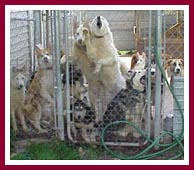 Specified size based upon
dog size, temperament and number of dogs. Specified size based upon
dog size, temperament and number of dogs.
Must give each dog the opportunity to achieve a running
stride in at least one run or exercise area that the dog is in each day.
Repetitive solitary physical activity, restrictive of
other activities and not goal-oriented, shall not be permitted.
Outside runs and exercise areas do not need dog shelters
but must have shaded area of a size directly proportional to the size of the
dog to be shaded.
Turn out pens, paddocks, extra large exercise areas, or
open fields for supervised training or exercise do not need dog shelters or
shade.
 Printer-friendly version
(pdf) Printer-friendly version
(pdf) 
|
| |
Top
|
| |
 Recommendations: Dog Grouping and Separation Recommendations: Dog Grouping and Separation
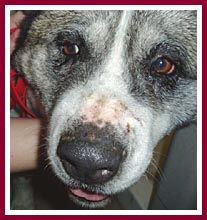 Dogs housed together in
the same primary enclosure shall be maintained in compatible groups. Dogs housed together in
the same primary enclosure shall be maintained in compatible groups.
Females in season (estrus) shall not be kept in the same
primary enclosure, run, or exercise areas with males, except for breeding
purposes.
Any dog exhibiting an aggressive behavior shall be
housed individually in a primary enclosure, run, or exercise area.
Puppies under the age of 4 months shall not be housed in
the same primary enclosure, run, or exercise area with adult dogs other than
their dam or foster dam, unless under direct supervision.
Any bitch in whelp will be housed individually in a
primary enclosure, pen, or exercise area a minimum of one week prior to the
whelping date.
 Printer-friendly version
(pdf) Printer-friendly version
(pdf) 
|
| |
Top
|
| |
 Recommendations: Behavior and Socialization Recommendations: Behavior and Socialization
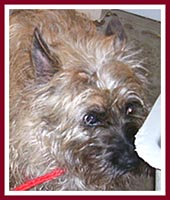 The licensee
will have a written plan on file for meeting behavior and socialization
requirements. The licensee
will have a written plan on file for meeting behavior and socialization
requirements.
No dog will be housed for extended periods of time in a
manner devoid of any enrichment, activity or social contact.
Dogs will be provided full-body physical contact with
other compatible dogs daily, except for needs which are documented.
Dogs will be provided with daily positive human contact
and socialization, beyond feeding time.
Dogs will be provided some form of effective inanimate
enrichment in their primary enclosure where appropriate and is designed so as
to prevent harm.
Dogs housed singly will be provided visual enrichment
daily, except for needs which are documented.
 Printer-friendly version
(pdf) Printer-friendly version
(pdf) 
|
| |
Top
|
| |
 Recommendations: Transportation Recommendations: Transportation
1. Enclosure:
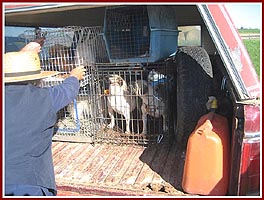 Secured, water
resistant, well constructed of cleanable material, and designed to protect the
health and ensure the safety of the animals. Secured, water
resistant, well constructed of cleanable material, and designed to protect the
health and ensure the safety of the animals.
Have ventilation to ensure the comfort and health of the
dogs at all times.
Constructed or positioned in the vehicle in such a
manner that:
Each animal in the vehicle has access to sufficient air
for normal breathing.
The openings of such enclosures are accessible at all
times for emergency removal of the animals.
The animals are afforded protection from the elements.
-
The animal areas of the vehicle shall be heated or
cooled when necessary to prevent hypothermia or hyperthermia of the dogs being
transported.
Large enough to ensure that each animal contained
therein has sufficient space to turn, stand, and lie down.
Animals which are not conditioned to each other may not
be transported in the same primary enclosure.
Animals shall not be placed in enclosures over other
animals in transit unless such enclosure is fitted with a floor of a material
which prevents animal excreta from entering lower enclosures.
Shall be cleaned and sanitized between trips, or more
often if necessary
2. Health and
Comfort:
Dogs shall be visually inspected every 4 hours.
Dogs shall be removed from the vehicle while in active
transport a minimum of every 12 hours and allowed to urinate, defecate, and
obtain exercise.
Food and water shall be provided consistent with other
requirements of this rule.
Grouping and separation shall be provided consistent
with other requirements of this rule.
Dogs shall be removed from the vehicle immediately upon
arrival at any destination stopping point.
3. Vehicles:
Shall be equipped to provide fresh or filtered air to
all animals being transported without injurious drafts
The animal cargo space shall be so constructed and
maintained as to minimize the ingress of exhaust from the vehicle's engine.
 Printer-friendly version
(pdf) Printer-friendly version
(pdf) 
|
| |
Top
|
 Dog Sellers Standards of Care
(pdf) Dog Sellers Standards of Care
(pdf)  Certificate of
Veterinarian Inspection (CVI) & Age of Transfer
(pdf) Certificate of
Veterinarian Inspection (CVI) & Age of Transfer
(pdf) 
 Standards of Care Examples from Other
States Standards of Care Examples from Other
States 
 2009 WISCONSIN ACT 90 (pdf) 2009 WISCONSIN ACT 90 (pdf)  2009 WI 90 Administrative Rules Process
Overview 2009 WI 90 Administrative Rules Process
Overview 
 2009 WI
Act 90 Administrative Rules Process: How It Works 2009 WI
Act 90 Administrative Rules Process: How It Works 
 21 April 10 DSAC Meeting
Recommendations 21 April 10 DSAC Meeting
Recommendations  Printer-friendly version (pdf) Printer-friendly version (pdf) 
 MEMO: Dog Foster Licensing under s.
173.41 MEMO: Dog Foster Licensing under s.
173.41  Printer-friendly version
(pdf) Printer-friendly version
(pdf) 
 MEMO: Co-ownership of Dogs and Licensing Under s. 173.41
(pdf) MEMO: Co-ownership of Dogs and Licensing Under s. 173.41
(pdf)  Printer-friendly
version (pdf) Printer-friendly
version (pdf) 
|
| |
|
|
|
|
Home * Contact
Us * Site Map
What is a Puppy
Mill? * What YOU Can Do * Laws/Legislation * Action Alerts
Thorp Dog
Auctions * Puppy Mill Survivors * Photo Album
Guide to Finding a
Pet * Breeders With Pride * Drive To Save Lives!
©
Copyright, 2009. The Wisconsin Puppy MIll Project
P.O. Box 926 * Sheboygan, WI
53082-0926 * info@NoWisconsinPuppyMills.com
Website design by
Hook & Web
Designs
|
|